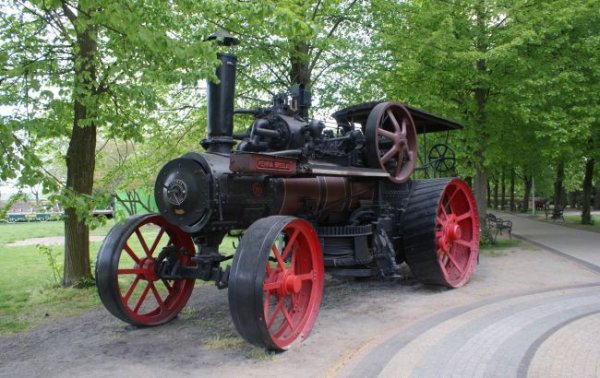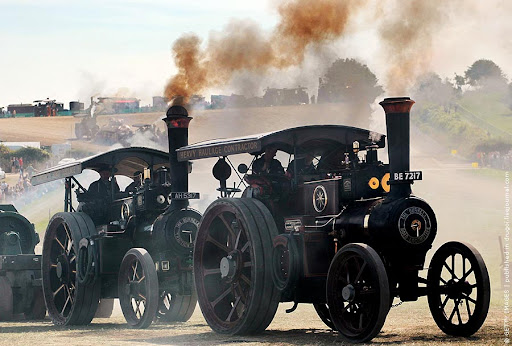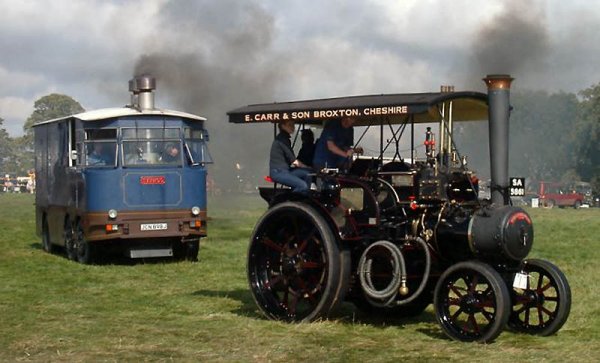
Photo: Steam engines on the roads of Ukraine and Europe Author: Konstantin Shirokun
In fact, the first vehicles that did not require horses appeared long before the birth of the first automobile in 1886. Why do we know nothing about them?
Read about the motor transport that traveled across Europe and America before the advent of gasoline in the RBC-Ukraine article.
The fathers of the global automobile industry, G. Daimler and K. Benz (by the way, does the combination of their names remind you of anything?) designed their first cars in the world for a specific fuel – gasoline. But it turns out that before its widespread use, human civilization used a different type of fuel – and, accordingly, other engines and vehicles. Why did powerful and strong locomobiles give up their positions and give way to other machines – fragile cars with gasoline internal combustion engines?
Engineers who didn't expect the internal combustion engine
Before advanced scientists and practitioners designed a working internal combustion engine (ICE), humanity had been using transport with an external combustion engine for half a century – the so-called steam engine. And accordingly, there were vehicles based on it.
But first there were steam locomotives that ran on rails. In parallel with their spread, starting in the 1820s and 1830s, engineers of that time began trying to launch them not on rails, but simply on the road. However, there were more problems than results: with a weight of about 10 tons, steam locomotives were loaded into the ground. There were also problems of a different, non-technical nature: it was impossible to make a small steam locomotive, and a large one, firstly, was not available, and secondly, with its mass and dimensional features, was needed by a limited circle of potential consumers. But, oddly enough, agriculture saved the situation.

Steam transport in the countryside
While steam engines pulled carriages on the railroad, they were used as stationary power sources in industry and the countryside. Various types of machines, mills, water pumps, threshers, winnowing machines, etc. were connected to the steam engine. The so-called age of steam arrived, and the steam engine was taught to replace even horses: steam plows were produced in Europe, which looked like a winch with cables, blocks, and a frame with reversible ploughshares.
The availability of fuel was in favor of the spread of such engines, especially since it often did not have to be purchased. Peasants threw into the firebox whatever was lying under their feet, as well as waste from their own production: firewood, peat, straw, and the like. Finally, traditional coal was also used.
Steam power plants of the first half of the 20th century had a capacity of about 6 – 10 horsepower at shaft speeds of about 100 – 110 rpm. Torque (a characteristic accompanying power) was not measured then, although traditionally for any steam engine it was significant.
An important point: in the 19th century, such a high-tech power unit was clearly unavailable to an individual farmer. But it was rented by the hour, and so steam engines began to be mounted on a frame with wheels. Thanks to this, several horses or oxen dragged this steam power plant from village to village, from farm to farm, and even from one field to another.
On its own
Naturally, it was stupid to pull an engine with horses, which itself had a power of ten horsepower. Therefore, the designers of these mobile power units were eventually able to connect a transmission to the wheels, which transmitted the power of its own engine to them. They also added a mechanism for turning one pair of wheels so that the resulting self-propelled transport could fit into road turns.
Thus, almost by accident, the first trackless mechanical transport appeared and became widespread – the locomotive, also known as the rutier.
First generation steam cars
Purely transport modifications of traction engines immediately appeared: tractors, agricultural tractors, construction rollers. It is interesting that the traction engine, the closest to a modern car in its purpose, was a tractor. And it carried cargo not on itself, but on a trailer. Even entire small trains were formed from cargo trucks.
And still, steam transport mainly traveled in the countryside and outside the city, because on the streets of the cities and towns of that time these giants were out of place: black smoke, the noise of steam and mechanisms, plus the dimensions upset the residents and their horses.
But this did not prevent locomobiles of various types from becoming quite common equipment in the developed regions of Europe and America.

Don't get confused!
It should be noted that steam tractors and tractors of the pre-gasoline era should not be confused with steam cars of the early 21st century – that is, with those that competed successfully with gasoline cars and also with the first electric cars for quite a long time. But that is a topic for another conversation. And here, in defense of the second-generation steam engines, we will only say that they were really cars: light, compact, dynamic. And they often consumed kerosene or oil, rather than coal or firewood. However, gasoline cars eventually turned out to be more convenient.
Short
So, those road steam monsters died out, literally like dinosaurs – they turned out to be too heavy and big to be mass-produced and generally available. But they became the basis – including in the social sense – for the emergence and development of more convenient cars with internal combustion engines. And there is another well-known fact: the legendary Henry Ford first thought about building generally available mechanical transport when, as a teenager, he saw a steam engine in a field.
Materials from Autocentre and Motor were used in preparing this article.
Recently, RBC-Ukraine reported on how alternative engines without gasoline are changing the auto industry.
